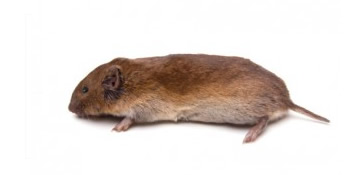Vole Control Techniques: Preserving Your Lawn's Beauty
Wiki Article
The Ultimate Handbook for Vole Parasite Control: Expert Tips on Invasion Monitoring and Treatment
Within the world of parasite control, vole problems provide a special difficulty that demands a tactical strategy. As we delve right into the complex globe of taking care of vole problems, a wealth of professional ideas and treatment alternatives waits for those looking to recover their areas from these persistent pests.Recognizing Vole Infestations
When assessing for vole problems, keen observation of details signs such as runways and burrow systems is crucial for exact identification. Voles, small rats resembling mice, are known for the considerable network of surface runways they create in grass or mulch. These paths typically have a size of concerning two inches and are kept clear of particles by the voles' constant use. Furthermore, vole burrow systems are an additional vital indication of problem. These delve entries are roughly 1.5 inches in size and lead to shallow passages that house nests and supply defense for the voles.

Avoidance Techniques for Voles
Effective prevention techniques for vole invasions entail applying proactive procedures to deter these small rodents from causing damages to outside spaces. To safeguard your building, beginning by keeping a tidy lawn complimentary of mess and particles. Voles are attracted to areas with ample hiding places, so getting rid of stacks of wood, rocks, and thick plant life can assist make your residential or commercial property less enticing to these parasites. In addition, consistently mowing the yard and keeping turf cut short can discourage voles from developing nests (vole lawn damage).

Additionally, maintaining a clean garden with appropriate spacing between plants can help in reducing vole-friendly environments. Prevent overwatering your grass or yard beds, as voles are drawn in to damp environments. By carrying out these prevention strategies, you can properly discourage voles and safeguard your outdoor areas from infestations.
Reliable Catching Strategies
Executing strategic capturing strategies is important in properly managing vole populaces and reducing damages to exterior areas. When establishing catches for voles, it is necessary to put them in active runways or burrow entryways. Voles are understood to adhere to certain paths repeatedly, making these prime places for trapping success. One reliable capturing strategy is making use of snap traps, which are designed to swiftly and humanely kill voles upon activation. These catches should be checked routinely and reset as required to make certain continual vole control. In addition, live traps can be made use of for those who favor to launch voles in other places after capture. When using real-time catches, it is essential to move the caught voles far from the capturing site to avoid their return. By employing a mix of snap catches and live traps tactically, house owners can properly reduce vole populaces and shield their outside spaces from more damage.All-natural and Chemical Treatment Options
To efficiently manage vole populaces and mitigate damage in outside atmospheres, exploring chemical and natural therapy choices is vital. Natural therapies provide ecologically friendly remedies that can help regulate vole invasions without triggering damage to other wildlife or plants. Growing vole-resistant plants like daffodils, fritillaries, or crown imperials can prevent voles from invading yards or backyards. Furthermore, developing obstacles with products such as gravel or wire mesh can restrict vole accessibility to at risk locations.On the various other hand, chemical therapies can give reliable control in instances of extreme infestations. Rodenticides consisting of zinc phosphide or anticoagulants you could check here like bromadiolone can be strategically placed in vole runways or tunnel entrances. Nevertheless, it is crucial to handle these chemicals with treatment to avoid unintentional damage to non-target types. Prior to executing any chemical treatment, it is a good idea to seek advice from a parasite control professional to make certain suitable and safe application techniques. By combining chemical and all-natural therapy options carefully, vole infestations can be managed successfully while reducing ecological effect.
Preserving a Vole-Free Environment

Executing all-natural vole repellents like castor oil-based products or predator pee can additionally help in hindering voles from invading your home. These repellents work by producing a negative environment for voles, encouraging them to seek sanctuary somewhere else. By integrating these safety nets and maintaining a cautious approach to vole control, you can create a vole-free environment that discourages infestations and promotes lasting insect administration success.
Final Thought
Finally, successful vole pest control requires a mix of determining problems, carrying out avoidance strategies, making use of reliable trapping techniques, and taking into consideration all-natural or chemical treatment alternatives. By maintaining a vole-free setting through these methods, homeowners can effectively manage and minimize vole populaces on their residential property - vole lawn damage. It is necessary to regularly keep an eye on for signs of invasion and take positive steps to stop future vole issuesBy precisely recognizing vole invasions early on, proper blog here bug control steps can be applied without delay to minimize possible damage to lawns, crops, and yards.
see this
Having established strategies to address vole infestations through chemical and all-natural treatments, the emphasis now shifts to preserving a vole-free atmosphere for lasting bug control.Applying natural vole repellents like castor oil-based items or predator urine can also assist in deterring voles from invading your residential or commercial property. By including these preventive measures and keeping an attentive technique to vole control, you can develop a vole-free atmosphere that dissuades invasions and promotes lasting bug monitoring success.
In conclusion, successful vole bug control calls for a mix of recognizing invasions, applying avoidance methods, using reliable trapping methods, and considering chemical or natural treatment alternatives.
Report this wiki page